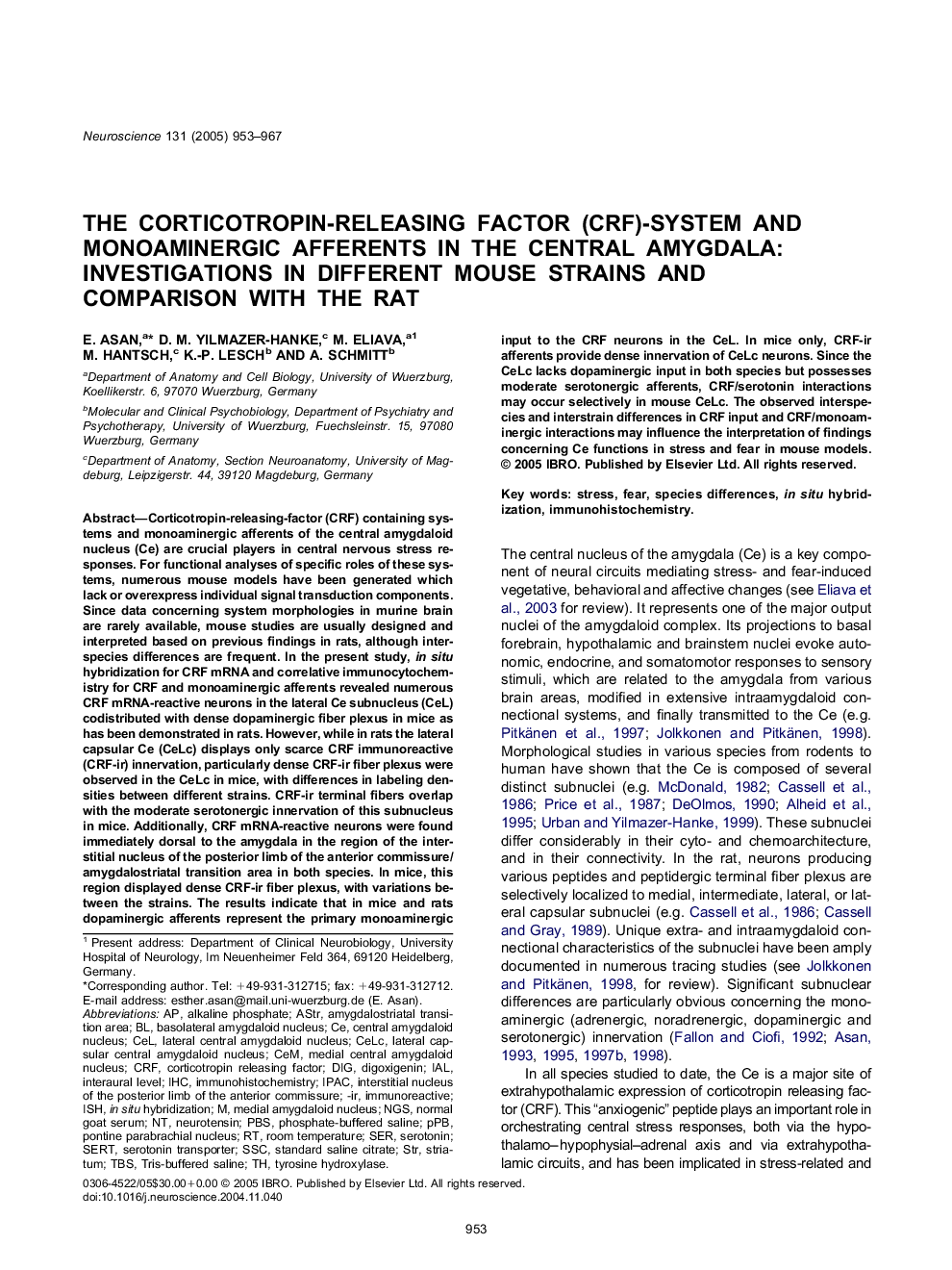| Article ID | Journal | Published Year | Pages | File Type |
|---|---|---|---|---|
| 9425519 | Neuroscience | 2005 | 15 Pages |
Abstract
Corticotropin-releasing-factor (CRF) containing systems and monoaminergic afferents of the central amygdaloid nucleus (Ce) are crucial players in central nervous stress responses. For functional analyses of specific roles of these systems, numerous mouse models have been generated which lack or overexpress individual signal transduction components. Since data concerning system morphologies in murine brain are rarely available, mouse studies are usually designed and interpreted based on previous findings in rats, although interspecies differences are frequent. In the present study, in situ hybridization for CRF mRNA and correlative immunocytochemistry for CRF and monoaminergic afferents revealed numerous CRF mRNA-reactive neurons in the lateral Ce subnucleus (CeL) codistributed with dense dopaminergic fiber plexus in mice as has been demonstrated in rats. However, while in rats the lateral capsular Ce (CeLc) displays only scarce CRF immunoreactive (CRF-ir) innervation, particularly dense CRF-ir fiber plexus were observed in the CeLc in mice, with differences in labeling densities between different strains. CRF-ir terminal fibers overlap with the moderate serotonergic innervation of this subnucleus in mice. Additionally, CRF mRNA-reactive neurons were found immediately dorsal to the amygdala in the region of the interstitial nucleus of the posterior limb of the anterior commissure/amygdalostriatal transition area in both species. In mice, this region displayed dense CRF-ir fiber plexus, with variations between the strains. The results indicate that in mice and rats dopaminergic afferents represent the primary monoaminergic input to the CRF neurons in the CeL. In mice only, CRF-ir afferents provide dense innervation of CeLc neurons. Since the CeLc lacks dopaminergic input in both species but possesses moderate serotonergic afferents, CRF/serotonin interactions may occur selectively in mouse CeLc. The observed interspecies and interstrain differences in CRF input and CRF/monoaminergic interactions may influence the interpretation of findings concerning Ce functions in stress and fear in mouse models.
Keywords
PBSPontine parabrachial nucleusIALIpaCcelCamygdalostriatal transition areaAStrISHppbCRFTBSNGSCelCEMSSCSTRIn situ hybridizationalkaline phosphatestandard saline citrateStressStriatumimmunoreactiveImmunohistochemistryIHCSERFearstria terminalisTris-buffered salineSpecies differencestyrosine hydroxylaseoptic tractRoom temperaturedigoxigeninSERTnormal goat serumSerotoninserotonin transporterDIGcorticotropin releasing factorPhosphate-buffered salinelateral hypothalamic areaneurotensinbasolateral amygdaloid nucleusinterstitial nucleus of the posterior limb of the anterior commissurecentral amygdaloid nucleusmedial amygdaloid nucleusLateral amygdaloid nucleusparaventricular hypothalamic nucleus-ir
Related Topics
Life Sciences
Neuroscience
Neuroscience (General)
Authors
E. Asan, D.M. Yilmazer-Hanke, M. Eliava, M. Hantsch, K.-P. Lesch, A. Schmitt,
